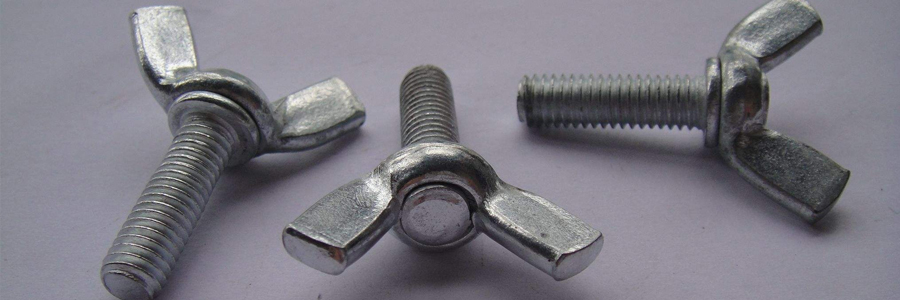Screw heat treatment - hydrogen embrittlement control - PTJ Shop
hydrogen embrittlement control
| In any plating solution, a certain amount of hydrogen ions are more or less present due to the dissociation of water molecules. Therefore, in the electroplating process, the screw precipitates a metal (main reaction) at the same time as the hydrogen is precipitated (side reaction). The effects of hydrogen evolution are multifaceted, the most important of which is hydrogen embrittlement. Hydrogen embrittlement is one of the most serious quality hazards in surface treatment. Screw parts with severe hydrogen evolution may break during use, causing serious accidents. Screw surface technicians must master techniques to avoid and eliminate hydrogen embrittlement to minimize the effects of hydrogen embrittlement. |
 Hydrogen embrittlement
Hydrogen embrittlement
Hydrogen embrittlement usually manifests as delayed fracture under stress. There have been galvanized parts such as automobile springs, washers, screws, leaf springs, etc., which have been broken several hours after assembly, and the breaking ratio is 40% to 50%. A special product cadmium-plated part has experienced batch crack cracking during its use. It has organized national research and developed a strict dehydrogenation process. In addition, some hydrogen embrittlement does not appear as delayed fracture. For example, electroplating hangers (steel wire, copper wire) have been subjected to multiple plating and pickling deplating, and hydrogen permeation is more serious. Brittle fracture phenomenon; the mandrel for precision forging of shotguns, after repeated chrome plating, smashed in the ground; some quenched parts (large internal stress) cracked during pickling. These parts have severe hydrogen permeation and cracks are generated without external stress, and it is no longer possible to use hydrogen to restore the original toughness.
Hydrogen embrittlement mechanism
The delayed fracture phenomenon occurs because hydrogen in the screw part diffuses and accumulates at a portion where stress is concentrated, and there are many metal defects in the stress concentration portion (atomic lattice dislocation, holes, etc.). Hydrogen diffuses to these defects, and the hydrogen atoms become hydrogen molecules, which generate a huge pressure. This pressure forms a resultant force with the residual stress inside the material and the applied stress of the material. When the resultant force exceeds the yield strength of the material, it will cause A fracture occurs. Since hydrogen embrittlement is related to the diffusion of hydrogen atoms, diffusion takes time, and the rate of diffusion is related to the concentration gradient, temperature, and material type. Therefore, screw hydrogen embrittlement usually manifests as delayed fracture.
Hydrogen atoms have a minimum atomic radius and are easily diffused in metals such as steel and copper, while hydrogen diffusion in cadmium, tin, zinc and their alloys is difficult. The cadmium-plated layer is the most difficult to diffuse. Hydrogen generated during cadmium plating initially stays in the plating layer and the metal surface layer under the plating layer. It is difficult to diffuse outward, and hydrogen removal is particularly difficult. After a period of time, hydrogen diffuses into the interior of the metal, especially hydrogen entering the internal defects of the screw metal, which is difficult to diffuse. The rate of hydrogen diffusion at normal temperature is quite slow, so immediate heating is required to dehydrogenate. Increased temperature increases the solubility of hydrogen in steel. Excessive temperature will reduce the hardness of the material. Therefore, the temperature selection before de-stressing and de-hydrogenation after plating must be considered not to reduce the hardness of the material. Brittle tempering temperature does not destroy the performance of the coating itself.
Founded in 2007, PTJ Shop is a professional hardware products enterprise integrating R&D, manufacturing and sales. The company has more than 50 sets of imported screw machines and automatic lathes in Taiwan and a complete set of testing equipment, producing national standard (GB), Japanese standard ( JIS), American Standard (ANSI), German Standard (DIN) and other non-standard screws, according to customer requirements to provide reliable quality, reasonable price, various standard and non-standard precision screws, ordinary screws and stainless steel screws, Dongguan screw factory, stainless steel combination screws , non-standard combination screws, CD-shaped screws, special screws, special screws for smart appliances, mobile phone screws, watch screws, environmental protection screws, etc.!
|
PTJ Machining Capabilities |
|
Automatic Bar Machining – Multi-spindle cam automatic screw machines CNC Turning – CNC delivers peak cost efficiency in shorter volumes, as well as high capacity production of mechanically simple components Custom Machining - with up to 12 axes of control Multi Spindle Machining- ISO 9001:2015 certified Screw Machine Products – The number of customized production parts per hour can reach 10000pcs Swiss Machining – with up to 9 axes of CNC control, to produce precision components with complex geometries in one operation High Volume Machining – 100 Advanced Production Turning Bar Automatics On-line and Ready CNC Milling - Machining Fully compliant with the exacting requirements of our customers 5 axis (11 axis) Machining – Tolerance | 0.1mm alignment |
What Can we help you do next?
∇ Get more information about cnc machining Shop
→Case study-Find out what we have done.
→Ralated tips about cnc machining services
By PTJ Manufacturing Shop|Categories: Blog|Tags: cnc milling services, cnc turning services, milling parts, turning parts, machining parts, special parts,faqs,technical news,company news,material news |Comments Off
